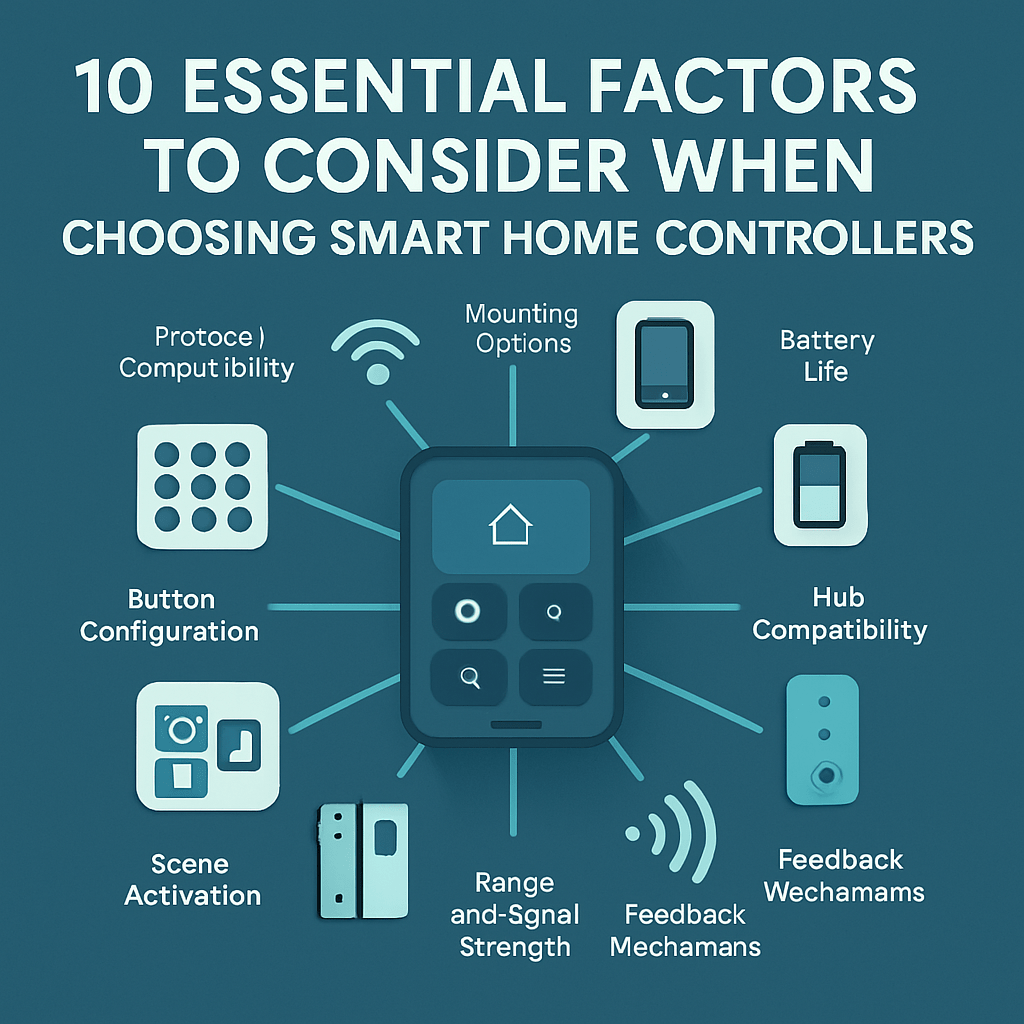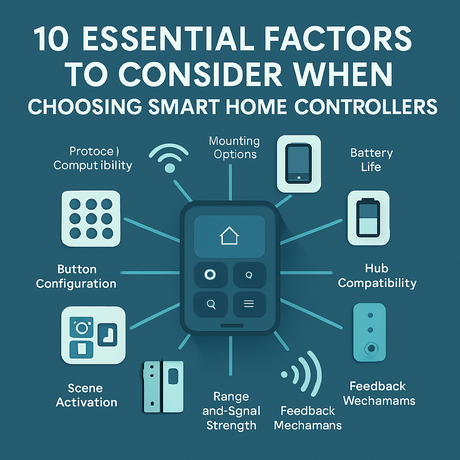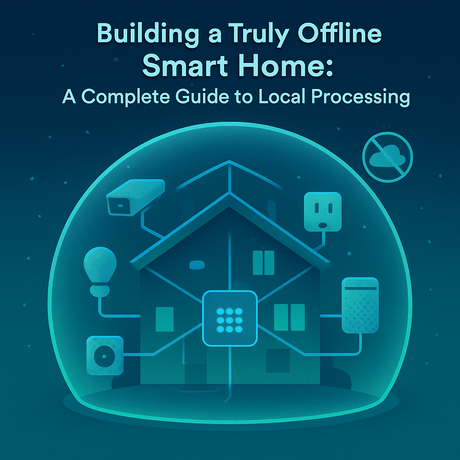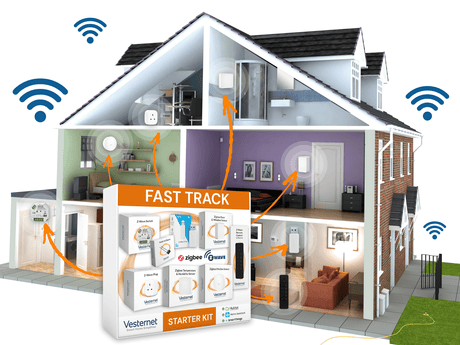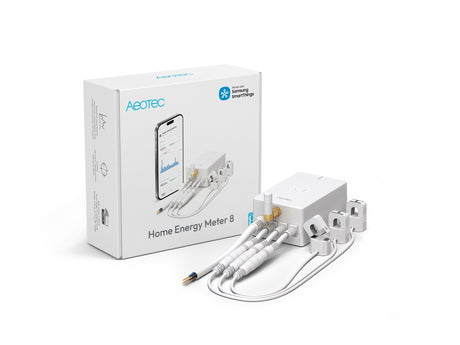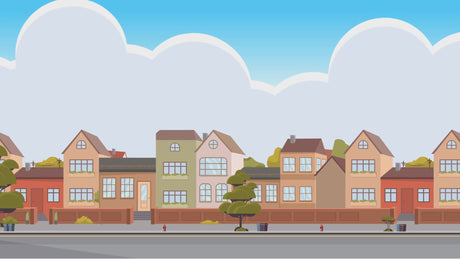In the ever-evolving landscape of smart home technology, controllers serve as the command center for your automated environment. Whether mounted on walls or carried as remotes, these devices transform how you interact with your smart home ecosystem. With various options available in both Z-Wave and Zigbee protocols, selecting the right controller requires careful consideration of several key factors. Let's explore what makes a smart home controller truly effective and how to choose the perfect option for your specific needs.

1. Protocol Compatibility Creates Foundation for Reliability
The wireless protocol your controller uses determines which devices it can communicate with and how effectively they'll work together. Z-Wave and Zigbee controllers operate on different frequencies and networking structures, each with distinct advantages. Z-Wave controllers utilize a robust mesh network that strengthens as you add more devices, offering exceptional reliability even in larger homes. Zigbee controllers provide similar mesh networking capabilities with slightly different technical specifications and compatibility options.
When selecting a controller, ensure it matches your existing smart home ecosystem or provides the foundation for the system you're planning to build. This compatibility is the cornerstone of a seamless smart home experience.
2. Button Configuration Determines Control Flexibility
The number and arrangement of buttons on your controller directly impact its versatility and ease of use. Controllers range from simple 2-button designs for basic functions to comprehensive 12-button remotes that can manage complex scenes and multiple device groups. Each button typically supports multiple functions through different press types (single press, double press, long press), effectively tripling your control options.
Consider your daily routines and the number of scenes or devices you'll want to control. For simple on/off functionality in a single room, a 2-button controller may suffice. For managing multiple zones or complex scenes, an 8-button or 12-button option provides the flexibility needed without overwhelming complexity.
3. Mounting Options Enhance Accessibility and Convenience
How and where you can position your controller significantly impacts its usefulness in daily life. Wall controllers offer the familiarity of traditional switches with the added benefit of smart functionality, while remote controllers provide the freedom to control your home from anywhere within range. Some controllers offer multiple mounting options, including removable wall mounts that combine the best of both worlds.
Consider the primary locations where you'll need control and whether fixed positioning or mobility better serves your lifestyle. Wall controllers excel in high-traffic areas like entryways and living rooms, while remotes prove invaluable for bedrooms and spaces where flexibility matters most.
4. Battery Life Ensures Reliable Long-Term Operation
The power requirements of your controller determine how often you'll need to perform maintenance. Most modern controllers utilize long-lasting batteries that can operate for 1-2 years under normal use, but this varies based on frequency of use and the controller's power management capabilities. Some controllers include battery level reporting features that alert you when replacement is needed.
For wall controllers that see frequent daily use, longer battery life becomes particularly important to minimize maintenance. Remote controllers may benefit from rechargeable options if used extensively throughout the day.
5. Hub Compatibility Expands Ecosystem Integration
While controllers communicate directly with your smart home hub, not all controllers work with every hub on the market. Compatibility with popular platforms like SmartThings, Hubitat, and Home Assistant ensures your controller integrates seamlessly into your existing ecosystem. This compatibility extends beyond basic functionality to include advanced features like scene activation and custom automations.
Before purchasing, verify that your chosen controller is fully compatible with your hub, including support for all button actions and event types. This ensures you'll be able to leverage the controller's full capabilities within your automation system.
6. Design Aesthetics Complement Your Home Environment
The visual appeal of your controller matters, especially for wall-mounted options that become part of your home's interior design. Modern controllers offer sleek, minimalist designs that blend seamlessly with contemporary décor while providing intuitive functionality. Consider factors like size, color, button layout, and overall design language when selecting controllers for visible locations.
For wall controllers especially, choose options that complement your existing switches and fixtures to maintain a cohesive look throughout your home. Remote controllers should feel comfortable in hand with intuitive button placement for ease of use.
7. Scene Activation Capabilities Enhance Automation Potential
The ability to trigger complex scenes with a single button press transforms how you interact with your smart home. Advanced controllers support multiple press types per button (single, double, long press), allowing you to trigger different scenes with the same physical button. This multiplies your control options without adding visual complexity to the controller itself.
Look for controllers that support at least three action types per button to maximize flexibility while maintaining an intuitive user experience. This capability allows your controller to grow with your smart home as you develop more sophisticated automation needs.
8. Range and Signal Strength Ensure Whole-Home Coverage
The effective range of your controller determines where you can use it throughout your home. Both Z-Wave and Zigbee controllers benefit from their respective mesh networks, which extend range by routing signals through other devices. However, the initial transmission strength still matters, particularly for remote controllers that may be used in various locations.
For larger homes or installations where controllers might be used at a distance from the nearest mesh device, opt for controllers with stronger transmission capabilities to ensure reliable operation throughout your space.
9. Feedback Mechanisms Improve User Experience
How your controller communicates successful actions significantly impacts the user experience. Many advanced controllers incorporate LED indicators that confirm when commands have been received and executed. This visual feedback eliminates uncertainty and builds confidence in your smart home system's reliability.
Consider controllers with clear, intuitive feedback mechanisms that confirm your commands have been registered without being distracting or overly bright in darkened rooms.
10. Future-Proofing Protects Your Investment
Smart home technology continues to evolve rapidly, making future compatibility an important consideration. Controllers that receive firmware updates and support emerging standards offer better long-term value. Both Z-Wave and Zigbee continue to develop, with newer versions offering improved features and performance.
Invest in controllers from established brands with a track record of supporting their products through updates. This ensures your controller remains compatible with new devices and features as your smart home ecosystem grows and evolves.
Finding the Right Controller for Your Smart Home Needs
When selecting the perfect controller for your smart home, consider your specific requirements and how you interact with your spaces. Here are our recommendations based on different user needs:
For Beginners and Simple Setups: The Vesternet Zigbee Wall Controller - 2 Button or Z-Wave Wall Controller - 2 Button provides straightforward control with minimal complexity. These controllers are perfect for controlling basic functions like lighting in a single room or triggering simple scenes.
For Multi-Room Control: The Vesternet Zigbee Wall Controller - 4 Button or Z-Wave Wall Controller - 4 Button offers expanded capabilities while maintaining an intuitive interface. These mid-range controllers balance functionality with simplicity for controlling multiple device groups or rooms.
For Advanced Users and Complex Scenes: The Vesternet Zigbee Wall Controller - 8 Button or Z-Wave Wall Controller - 8 Button provides comprehensive control options for managing multiple zones, complex scenes, and diverse device types from a single location.
For Maximum Flexibility: The Vesternet Zigbee Remote Control - 12 Button or Z-Wave Remote Control - 12 Button delivers portable control with extensive functionality. These remote controllers are ideal for users who want comprehensive control from anywhere in the home.
By carefully considering these factors and matching them to your specific needs, you'll select a controller that enhances your smart home experience today while accommodating your growing automation ambitions for tomorrow.

